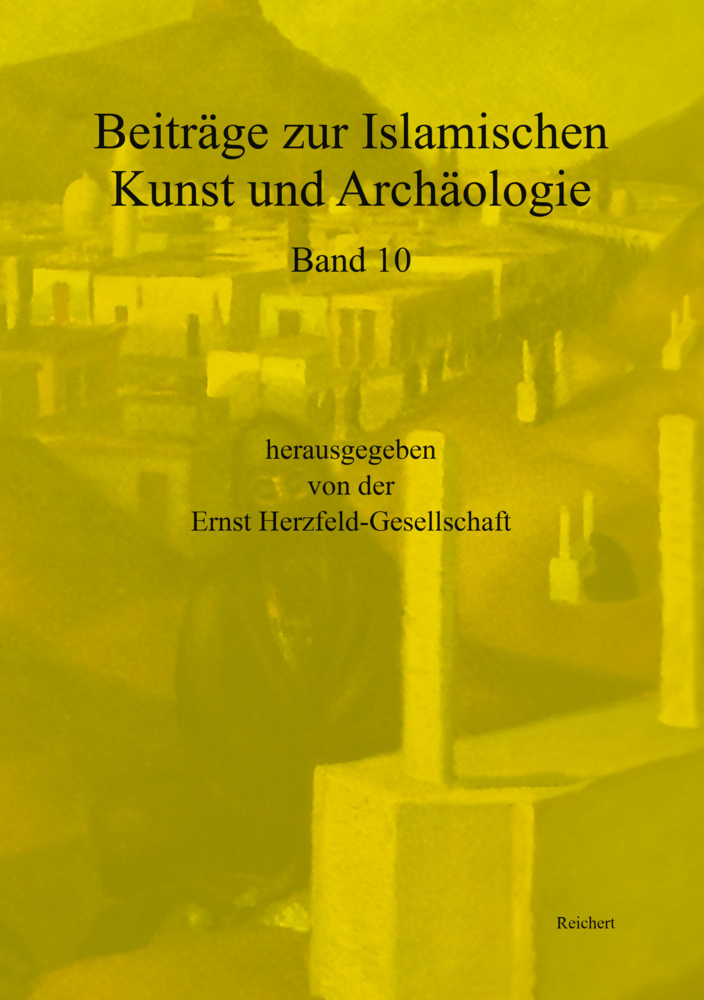Di Cesare, Michelina (Hrsg.)
Ritter, Markus (Hrsg.)
Beiträge zur Islamischen Kunst und Archäologie
The Arts and Archaeology of Funerary Cultures in Islam

Verfügbare Version:
Der Artikel erscheint laut Verlag/Lieferant voraussichtlich am 30. Juni 2025
79,00 €
inkl. MwSt., ggf. zzgl. Versand
Beschreibung
This volume results from the 16th Colloquium of the Ernst Herzfeld Gesellschaft zur Erforschung der islamischen Kunst und Archäologie (EHG) | Ernst Herzfeld Society for Studies in Islamic Art and Archaeology, held in Rome from 1 to 3 July 2021.
It collects nine essays investigating, from diverse methodological and disciplinary perspectives, visual and material manifestations of funerary culture related to different geographical, chronological, and cultural contexts of the dar al-Islam.
The relationships between the late Ottoman Mosque of Zeyneb Sultan and the adjacent remains of the early Byzantine Theotokos Chalkoprateia church in Istanbul are explored in Franziska Schneider's essay. Andrew Petersen's contribution is an extensive and detailed overview of recorded excavations of Muslim burials and examines past and recent attitudes of archaeologists and local communities towards the study of human remains. The third essay, by Amelia Blundo, deals with the architectural artefacts found in the necropolis of Aswan and the origins of the muqarnas dome. Frantz Chaigne's contribution focuses on the 'global program' pursued in realizing the mausoleum of Öljaytü in Sultaniyya, and the Qur_an manuscripts specifically made for it. The almost coeval complex in Hasankeyf, known as Koç mosque, recently submerged due to the construction of the Ilisu dam, is thoroughly analysed by Ana Marija Grbanovic. Riyaz Latif approaches from a novel perspective the study of funerary complexes commissioned by and dedicated to royal ladies of the Ahmad Shahi dynasty. The works of the modernist Egyptian painter Mahmoud Saïd, especially those featuring funerary architecture he realised between 1924 and 1934, are the subject of Roberta Marin's essay. Gianfranco Bria presents a reconstruction of the recent history of the Bekhtashiyya in Albania, and its attempts to reclaim its social role after the end of communism.
The essays are preceded by an Introduction illustrating the Colloquium's framework and are followed by an alphabetical list of the speakers with the titles of the papers they delivered.
Besides expanding the knowledge and interpretation of specific case-studies, the volume contributes to highlighting the extent and complexity of visual and material aspects of death, and the hereafter, in Islamic contexts, and the variety of methodological approaches and disciplinary perspectives required to draw a more systematic and comprehensive picture of funerary culture in Islam.
It addresses scholars, students, and a general audience.
https://corsidilaurea.uniroma1.it/it/users/michelinadicesareuniroma1it or https://uniroma1.academia.edu/MichelinaDiCesare
It collects nine essays investigating, from diverse methodological and disciplinary perspectives, visual and material manifestations of funerary culture related to different geographical, chronological, and cultural contexts of the dar al-Islam.
The relationships between the late Ottoman Mosque of Zeyneb Sultan and the adjacent remains of the early Byzantine Theotokos Chalkoprateia church in Istanbul are explored in Franziska Schneider's essay. Andrew Petersen's contribution is an extensive and detailed overview of recorded excavations of Muslim burials and examines past and recent attitudes of archaeologists and local communities towards the study of human remains. The third essay, by Amelia Blundo, deals with the architectural artefacts found in the necropolis of Aswan and the origins of the muqarnas dome. Frantz Chaigne's contribution focuses on the 'global program' pursued in realizing the mausoleum of Öljaytü in Sultaniyya, and the Qur_an manuscripts specifically made for it. The almost coeval complex in Hasankeyf, known as Koç mosque, recently submerged due to the construction of the Ilisu dam, is thoroughly analysed by Ana Marija Grbanovic. Riyaz Latif approaches from a novel perspective the study of funerary complexes commissioned by and dedicated to royal ladies of the Ahmad Shahi dynasty. The works of the modernist Egyptian painter Mahmoud Saïd, especially those featuring funerary architecture he realised between 1924 and 1934, are the subject of Roberta Marin's essay. Gianfranco Bria presents a reconstruction of the recent history of the Bekhtashiyya in Albania, and its attempts to reclaim its social role after the end of communism.
The essays are preceded by an Introduction illustrating the Colloquium's framework and are followed by an alphabetical list of the speakers with the titles of the papers they delivered.
Besides expanding the knowledge and interpretation of specific case-studies, the volume contributes to highlighting the extent and complexity of visual and material aspects of death, and the hereafter, in Islamic contexts, and the variety of methodological approaches and disciplinary perspectives required to draw a more systematic and comprehensive picture of funerary culture in Islam.
It addresses scholars, students, and a general audience.
https://corsidilaurea.uniroma1.it/it/users/michelinadicesareuniroma1it or https://uniroma1.academia.edu/MichelinaDiCesare
Produktdetails
| ISBN/GTIN | 978-3-7520-0892-0 |
|---|---|
| Erscheinungsjahr | 2025 |
| Seitenzahl | 140 S. |
| Einbandart | gebunden |
| Format | 17 x 24 cm |
Produktsicherheit
Herstellername: Dr. Ludwig Reichert Verlag Inhaberin Ursula Reichert
Herstelleradresse: Ursula Reichert, Tauernstraße 11, 65199 Wiesbaden, DE
E-Mail-Adresse: info@reichert-verlag.de
Herstelleradresse: Ursula Reichert, Tauernstraße 11, 65199 Wiesbaden, DE
E-Mail-Adresse: info@reichert-verlag.de

